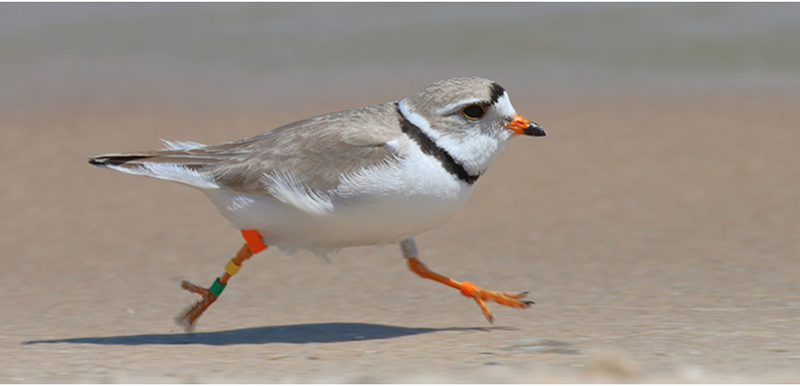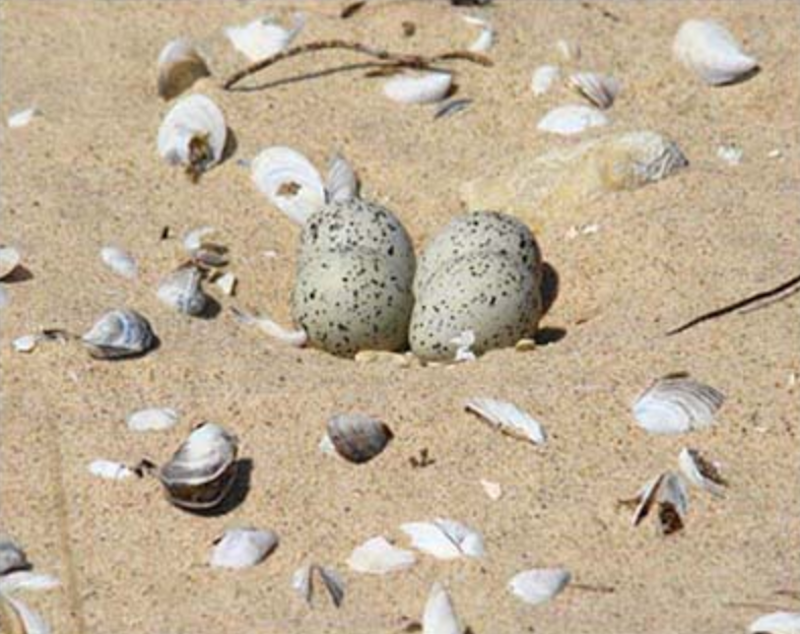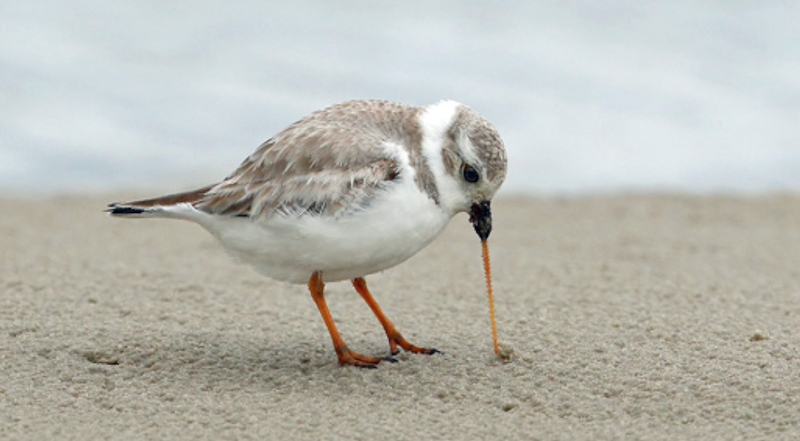THE PIPING PLOVER
By: Mariama Bah, who will be entering the 9th grade in the fall and is a reporter for Simpson Street Free Press
Hello and welcome to “Bah on Birds.” I’m Mariama Bah, author of “Bah on Birds” and a volunteer for the Wisconsin Society of Ornithology. In my free time, I like to crochet, read books, and learn new things, which is why I joined the WSO. What I hope to accomplish with my volunteer work is to educate people about the endangered and threatened birds of Wisconsin and ways to protect these birds. I hope you enjoy these articles!

A Piping Plover runs along a Great Lakes beach. Photo by Vince Cavalieri, US Fish and Wildlife Service
Sandy beach shores and tidal flats are where the Piping Plover can be found nesting. Charadrius melodus is known for its small sand-colored body. They are hard to identify until they start running, when you can see their white underbelly and bright orange legs. The plovers eat a diet of insects, spiders, and crustaceans that are native to the environment around them.
The Piping Plover would be found all over the Great Lakes Regions, the Northern Great Plains, and the Atlantic Coast of the United States. However, due to human activity, climate change, and construction, the population of the plovers has severely declined. The beaches originally used for nesting are now overrun with tourists and real estate developers. The eggs laid by the mothers are being crushed and young birds are being harassed by dogs and cats.

A Piping Plover nest is merely a shallow scrape in the sand where eggs are laid. Photo by Vince Cavelieri, US Fish and Wildlife Service
Efforts to save the Piping Plover started in 1985 with the Endangered Species Act (ESA) and recovery plans developed by the U.S. Fish and Wildlife Service. Now there are multiple research centers—private and public—that serve the Piping Plover and are devoted to protecting the avian species. But there is still a long way to go.
So what can we do to help? One of the greatest things you can do is raise awareness. Educating yourself and understanding the threats against the plover can protect them. Being cautious around nesting spots and keeping dogs on leashes while at the beach can prevent the destruction of their eggs. Finally, reporting plover sightings in places where there aren’t any known plovers is extremely helpful. The information is used to learn about nesting patterns, birth rates, life expectancy, and much more. You can report the sighting to the Great Lakes Piping Plovers, which is an organization of individuals who are dedicated to researching and helping the Piping Plover. To find out more about Great Lakes Piping Plovers, please visit https://www.greatlakespipingplover.org/
Hopefully, with nationwide efforts, we can protect the Piping Plover and ensure the survival of these birds.


